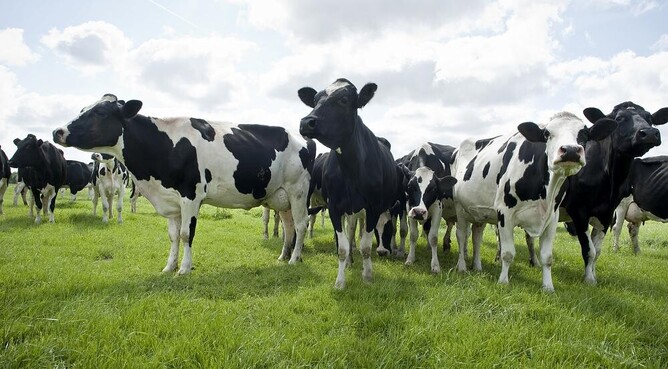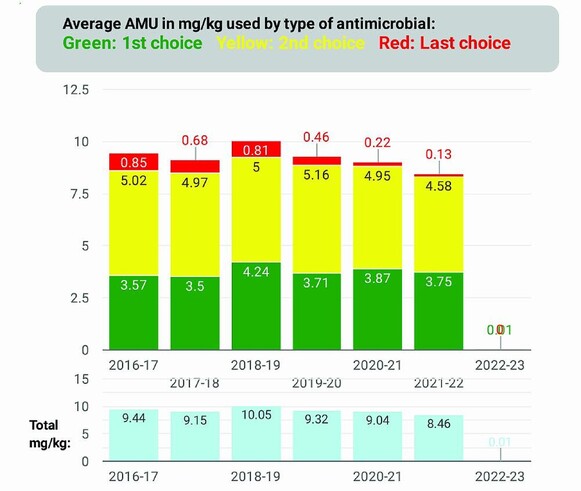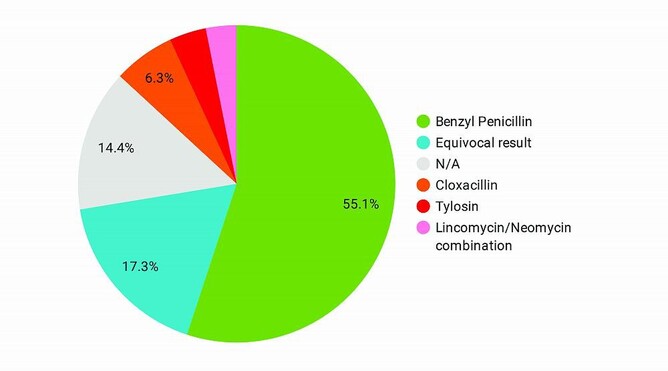Antimicrobial Usage (AMU) and Antimicrobial Resistance (AMR) have been buzzwords in the industry for a number of years. We have all felt the effects of pressure from the public, government and media to justify, reduce and be held accountable for which antibiotics we use and when.
In 2015, the Vet Association set the goal that “by 2030 New Zealand Inc will not need antimicrobials for the maintenance of animal health and wellness”. The 3 main goals for reducing the onset of antibiotic resistance are:
- Reducing the total amount of antibiotics used,
- Using the right antibiotic first and at the right time,
- Reducing the amount of red light antibiotic usage if there is a better alternative.
The graph below (Figure 1) shows the last 6 years of AMU data for VetSouth dairy clients. The top section breaks this down into usage by “class” of antibiotic - 1st choice (green), 2nd choice (orange) and last choice (red).
As you can see, over the past four years the trend of antibiotic use on VetSouth dairy farms has been reducing, with:
- a 14% decrease in overall antibiotics used
- a whopping 84% reduction in red light antimicrobial use.
Are we still using the right products?
Culture and sensitivity of bugs are the best way to find out if we are using the right product to eliminate a bacteria. There are cowside tests that provide quick answers from mastitis samples to show which products should work against the bacteria present on farms.
Figure 2 shows data of which products were recommended as first-line treatment from over 6500 milk samples at VetSouth farms.
- For over half of the samples (55.1%) penicillin was the first choice antibiotic recommended to treat the mastitis in that sample
- 17.3% had results meaning they were resistant to all of the antibiotics tested
- 6.3% were recommended to use cloxacillin-based products
- Only 3.8% were recommended to use tylosin (red light antibiotic)
- 3.1% were recommended lincomycin/neomycin-based products.
Areas to target
There are a number of different areas that can be targeted to help reduce your own farm’s reliance on antibiotics. These will vary between farms and it is best to work alongside your vet to discuss this.
We have been utilising our antibiotic dashboard to benchmark every farm against the regional averages and look for areas of improvement. Some of the most common areas are:- If your mastitis situation and profile allows it, to move towards treating cows with just an internal teat sealant at drying off compared to blanket antibiotic dry cow use.
- Limiting the amount of antibiotics used in lame cows by training farm staff on what actually requires antibiotics and what doesn’t.
- Reducing mastitis prevalence by identifying problem areas to work on, e.g. culling, reducing spring mastitis etc.
- Vaccinating against key diseases like BVD, Rotavirus, Salmonella, Clostridial diseases.
Summary
In summary, overall reduction in antimicrobial usage throughout VetSouth farms has been great over the last 4 years.
Based on regional culture and antibiotic sensitivity samples, penicillin is still the number one first-line treatment for mastitis
Talk to your KeyVet about your farm's specific antibiotic usage and how this compares to the regional average. Look for areas to focus on for improvement and hopefully continue this downward trend.
- Rachel Bragg



